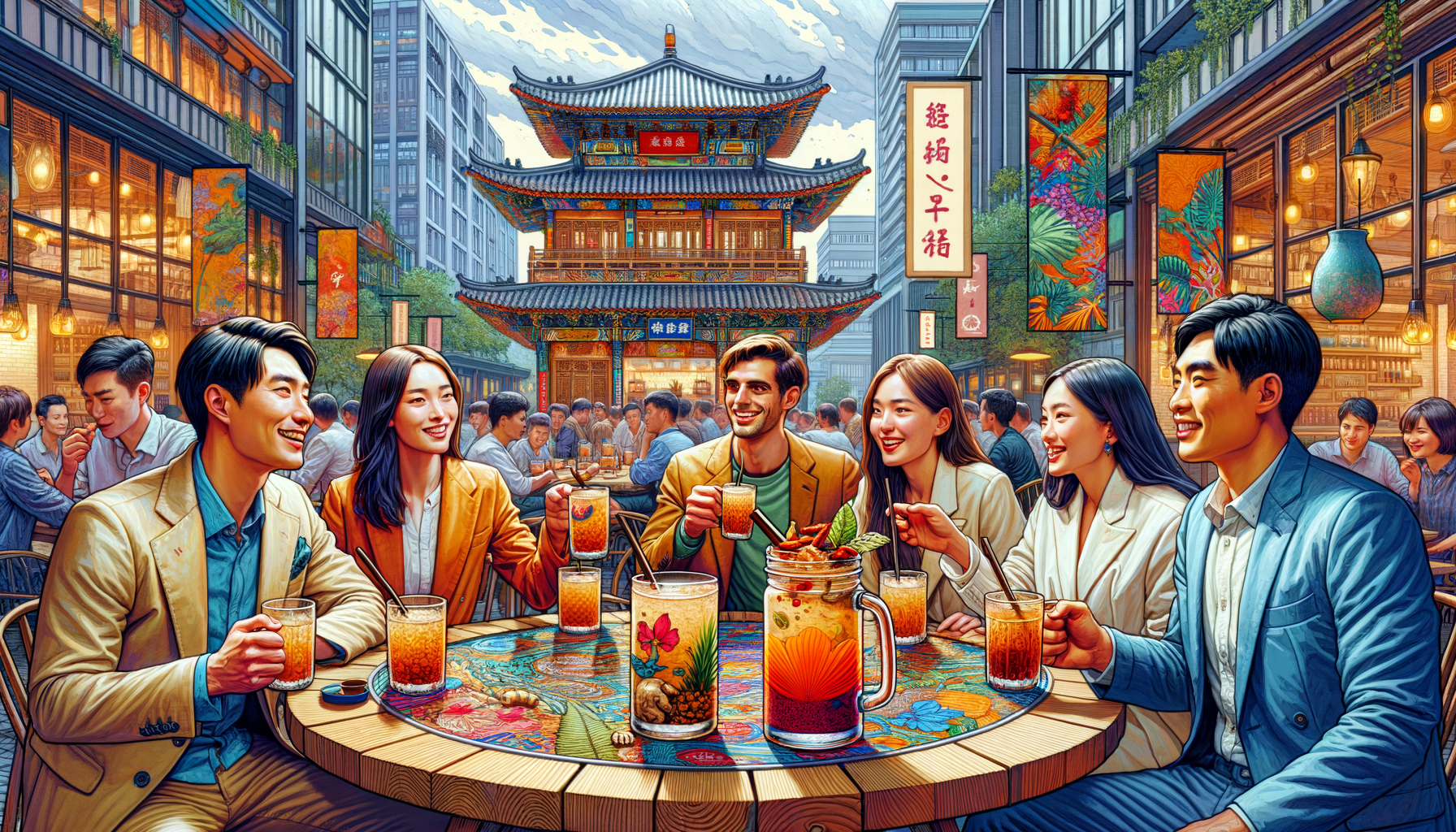Introduction
Kava is a traditional drink from the South Pacific Islands that helps people relax. It’s been popular in the West but is now getting attention in China. Let’s explore how Kava made its way to China, why it’s popular, and how it’s fitting into Chinese culture.
The Journey of Kava to China
Historical Background
People in the South Pacific Islands have used Kava for centuries in social and spiritual gatherings. In the 1980s, Kava became popular in the U.S. and Europe as a natural way to relax. Now, it’s catching on in Asia and especially in China where there’s a growing interest in natural health remedies.
Kava’s Introduction to Asia
In Asia, Kava offers a new but aligned option with Traditional Chinese Medicine (TCM). The Chinese market, which likes natural and effective remedies, is welcoming this ancient drink.
Why China is Embracing Kava
Health and Wellness Trends
China is getting more interested in health and wellness, which is one reason Kava is becoming popular.
- Natural Remedies: People want natural alternatives to medicine, and Kava helps with stress and anxiety, making it a good option.
- Mental Health Awareness: With more focus on mental health, Kava provides a gentle way to manage stress.
- Fit with TCM: Kava’s natural origins and its calming properties align well with the principles of Traditional Chinese Medicine.
Consumer Preferences
- Urban Professionals Seeking Relaxation: In busy cities like Shanghai and Beijing, professionals are looking for healthy ways to relax.
- Growing Middle Class: With more money to spend, the rising middle class is buying more wellness products like Kava.
Cultural Integration of Kava in China
Kava in Modern Chinese Social Culture
- Kava Bars and Cafes: In major cities, Kava bars and cafes are becoming popular spots for socializing, corporate events, and casual meetups.
- Social Gatherings: Like traditional tea houses, Kava bars are places where people can relax and connect.
Traditional vs. Modern Use
- Comparison with Traditional Drinks: While tea has a long history in China, Kava offers a new kind of social experience.
- Innovative Recipes: Chinese Kava bars are mixing Kava with traditional ingredients like goji berries and ginger to create new flavors.
Personal Anecdote: Matt Warren’s Experience with Kava in China
Introduction to Matt Warren, Co-founder of Psychedelic Water
Matt Warren, who co-founded Psychedelic Water, shared his experiences with Kava during his visit to a Kava bar in Shanghai.
A Memorable Trip to a Kava Bar in Shanghai
- Meeting Kava Enthusiasts: Matt met a variety of people, from young professionals to health experts, all interested in Kava.
- Unique Recipes: He was impressed by how they combined Kava with Chinese herbs.
Insights and Reflections on the Future of Kava in China
Matt believes Kava has great potential in China and thinks it will become a big part of Chinese wellness culture in the future.
Health Benefits of Kava: A Chinese Perspective
- Stress Relief and Anxiety Management: Kava is known for helping reduce stress and anxiety, which appeals to Chinese consumers.
- Social Connection: Drinking Kava in groups fits well with Chinese values of community and connection.
- Alignment with TCM: The calming effects of Kava complement the holistic approach of Traditional Chinese Medicine.
Challenges and Opportunities for Kava in China
Regulatory Landscape
- Importation and Legal Considerations: Navigating China’s complex regulations can be tough, but the growing interest in Kava makes it worthwhile.
- Quality Standards: Ensuring high-quality Kava products is important for gaining consumer trust.
Market Potential and Growth Areas
- Expanding Consumer Base: As more people learn about Kava, the potential customer base, including young urbanites and traditional wellness seekers, will grow.
- Business Opportunities: Entrepreneurs have a chance to introduce new Kava products and experiences.
Community Stories
- Featured Kava Enthusiasts: Stories about how Kava is improving people’s lives in China.
- Testimonials: Users share how Kava has become part of their routines for relaxation and wellness.
- Role of Social Media: Social media helps spread awareness and increase Kava’s popularity among young people.
Future Prospects
- Predictions for Growth: With urbanization and a growing focus on health, Kava’s popularity in China is likely to increase.
- Upcoming Events: Kava events and meetups can help boost its presence.
- Collaborations: Partnerships between Kava producers and Chinese companies can help Kava become more well-known.
Conclusion
Kava’s journey to China shows its wide appeal. With health benefits, cultural integration, and modern interest, Kava is a promising addition to the Chinese wellness scene. The future looks bright for Kava in China. Give it a try and join the Kava movement!

Leave a Reply